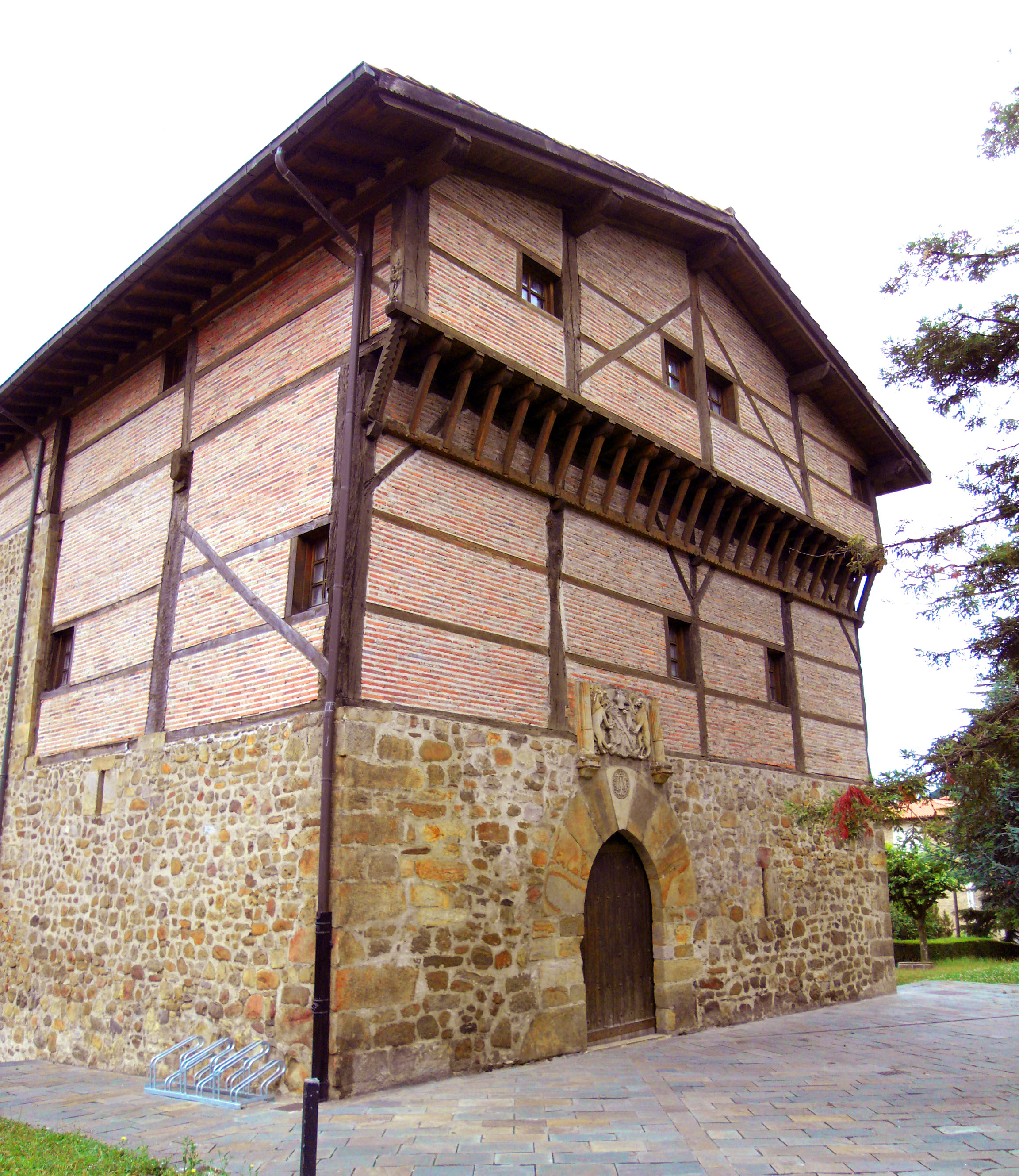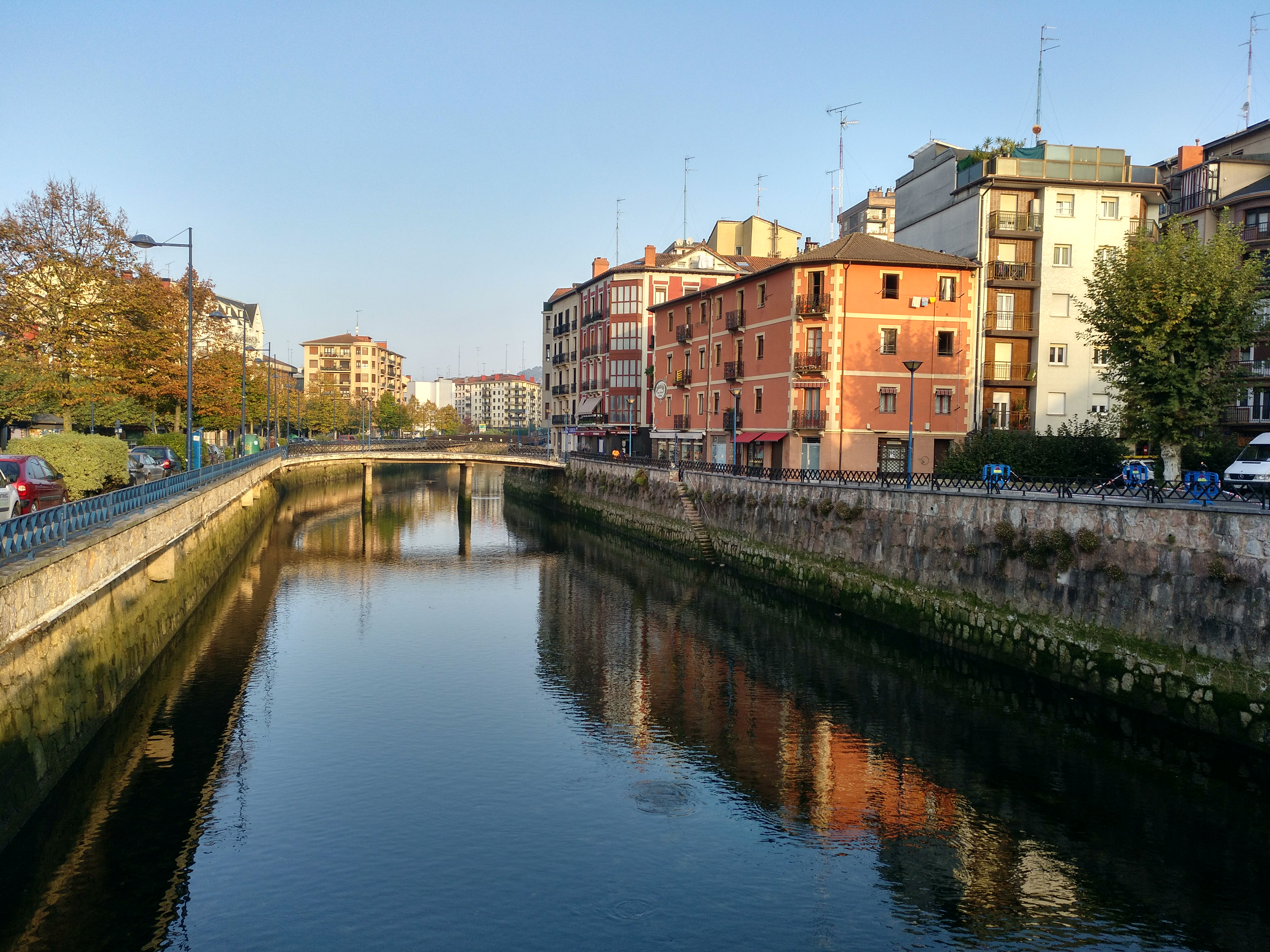|
War Of The Bands
The War of the Bands (, ) was a civil war, really an extended series of blood feuds, in the western Basque Country (historical territory), Basque Country, Cantabria, Duchy of Gascony, Gascony, and Kingdom of Navarre, Navarre in the Late Middle Ages. The main primary source for the War is ''Las Bienandanças e fortunas'' by Lope García de Salazar, written ''c''.1471. The war is named after the aristocratic networks of familial alliances and their armed followings, known as ''bandos'' (bands), that carried out constant wars for power and honour across three kingdoms. The wars ceased only with the imposition of royal authority under Ferdinand II of Aragon and Isabella I of Castile, Isabella of Castile, the Catholic Monarchs. The wars resulted partly from the destabilising effect of the Castilian Civil War and the ensuing political weakness of the House of Trastámara. That the Seniory of Biscay effectively ceased to exist after 1370 and was subsumed in 1379 into Castile only exace ... [...More Info...] [...Related Items...] OR: [Wikipedia] [Google] [Baidu] [Amazon] |
Bermeo
Bermeo is a town and municipality in the ''comarca'' of Busturialdea. It is in the province of Biscay, which is part of the autonomous region of the Basque Country in northern Spain. With a population of 16,765, it is the most important fishing port in the Basque Country. The town was founded in 1236, and is the largest in Busturialdea. Bermeo was the provincial capital of Biscay from 1476 to 1602. Tourist attractions include the island of Gaztelugatxe, the Ercilla Tower (a fishing museum), San Juan Gate and the port. Bermeo is connected by Euskotren Trena and BizkaiBus to Bilbao. It has a number of neighbourhoods: Arana, Artike, Agirre, San Andres, Almike, Arronategi, San Migel, Demiku, Mañu and San Pelaio. History Bermeo's history dates back to the monastery of San Juan of Gaztelugatxe in 1051. In 1082, it is mentioned by Don Lope lñiguez as "Sancti Michaelis Arcangeli in Portu of Vermelio". Ferdinand II of Aragon named the town the capital of Biscay on 31 July 1476, a ... [...More Info...] [...Related Items...] OR: [Wikipedia] [Google] [Baidu] [Amazon] |
Asturias
Asturias (; ; ) officially the Principality of Asturias, is an autonomous communities of Spain, autonomous community in northwest Spain. It is coextensive with the provinces of Spain, province of Asturias and contains some of the territory that was part of the larger Kingdom of Asturias in the Middle Ages. Divided into eight Comarcas of Asturias, ''comarcas'' (counties), the autonomous community of Asturias is bordered by Cantabria to the east, by Province of León, León (Castile and León) to the south, by Province of Lugo, Lugo (Galicia (Spain), Galicia) to the west, and by the Cantabrian Sea to the north. Asturias is situated in a mountainous setting with vast greenery and lush vegetation, making it part of Green Spain. The region has a oceanic climate, maritime climate. It receives plenty of annual rainfall and little sunshine by Spanish standards and has very moderate seasons, most often averaging in the lower 20s Celsius. Heat waves are rare due to mountains blocking s ... [...More Info...] [...Related Items...] OR: [Wikipedia] [Google] [Baidu] [Amazon] |
Hermandad
Santa Hermandad (, "holy brotherhood") was a type of military peacekeeping association of armed individuals, which became characteristic of municipal life in medieval Spain, especially in Castile. Modern hermandades in Spain, some of which evolved from medieval origins, are now for the most part religious confraternities retaining only a military structure and ethos. Background As medieval Iberian kings of León, Castile, and Aragon were often unable to maintain public peace, protective municipal leagues began to emerge in the twelfth century against bandits and other rural criminals, as well as against the lawless nobility or mobilized to support a claimant to the crown. These organizations were individually temporary, but became a long-standing fixture of Spain. The first recorded case of the formation of an ''hermandad'' occurred when the towns and the peasantry of the north united to police the pilgrim road to Santiago de Compostela in Galicia, and to protect the pilgr ... [...More Info...] [...Related Items...] OR: [Wikipedia] [Google] [Baidu] [Amazon] |
Azkoitia
Azkoitia () is a town located in the province of Gipuzkoa, in the Autonomous Community of Basque Country (autonomous community), Basque Country, in northern Spain. It is also the seat of the Municipalities of Spain, municipality of the same name. Geographical setting Azkoitia and the municipality of the same name, are located on and around the upper Urola river valley, centered on a small alluvial plain surrounded by the Basque mountains. Except for the valley itself, the terrain is rather rugged, with elevations ranging to little less than 950 meters. Population As of 2004, the municipality numbered 10,946 inhabitants, of whom 5,324 (49.867%) were men and 5,262 (50.133%) were women. Age is distributed among the sexes rather evenly with children and adolescents (0 to 17 years of age) forming 16.235% of the population, adults (18 to 54 years of age) making up 53.744%, and senior citizens forming the remaining 30.021%. Historical relevance Azkoitia was the birthplace of the mother ... [...More Info...] [...Related Items...] OR: [Wikipedia] [Google] [Baidu] [Amazon] |
Zumarraga, Spain
Zumarraga () is a municipality and industrial town in Gipuzkoa province of the Basque Country (autonomous community), Basque Country autonomous community of northern Spain, approximately by road southwest of San Sebastián and northwest of Idiazabal. As of 2018 the municipality had a population of 9834 people. The Urola (river), Urola river flows through the vicinity. It is the birthplace of Miguel López de Legazpi, conquistador who explored the Pacific Islands and the East Indies, and of Iñaki Urdangarín, Duke of Palma de Mallorca, Iñaki Urdangarín, the husband of Infanta Cristina, Duchess of Palma de Mallorca, Infanta Cristina of Spain. History In 1446 a battle took place there during the War of the Bands. In the 15th-century, the bridge that separates the municipalities of Zumárraga and Urretxu was named after the Zufiaur family. Geography Zumárraga is situated in the Gipuzkoan valley of Alto Urola. The valley is narrow with a width of about . On the west, the Urola R ... [...More Info...] [...Related Items...] OR: [Wikipedia] [Google] [Baidu] [Amazon] |
Gipuzkoa
Gipuzkoa ( , ; ; ) is a province of Spain and a historical territory of the autonomous community of the Basque Country. Its capital city is Donostia-San Sebastián. Gipuzkoa shares borders with the French department of Pyrénées-Atlantiques at the northeast, with the province and autonomous community of Navarre at east, Biscay at west, Álava at southwest and the Bay of Biscay to its north. It is located at the easternmost extreme of the Cantabric Sea, in the Bay of Biscay. It has of coastline. With a total area of , Gipuzkoa is the smallest province of Spain. The province has 89 municipalities and a population of 720,592 inhabitants (2018), from which more than half live in the Donostia-San Sebastián metropolitan area. Apart from the capital, other important cities are Irun, Errenteria, Zarautz, Mondragón, Eibar, Hondarribia, Oñati, Tolosa, Beasain and Pasaia. Gipuzkoa is the province of the Basque Country in which the Basque language is the most ex ... [...More Info...] [...Related Items...] OR: [Wikipedia] [Google] [Baidu] [Amazon] |
Fernando De Gamboa
Fernando is a Spanish and Portuguese given name and a surname common in Spain, Portugal, Italy, France, Switzerland, and former Spanish or Portuguese colonies in Latin America, Africa and Asia (like the Philippines, India, and Sri Lanka). It is equivalent to the Germanic given name Ferdinand, with an original meaning of "adventurous, bold journey". Given name * Fernando el Católico, king of Aragon A * Fernando Acevedo, Peruvian track and field athlete * Fernando Aceves Humana, Mexican painter * Fernando Alegría, Chilean poet and writer * Fernando Alonso, Spanish Formula One driver * Fernando Amorebieta, Venezuelan footballer * Fernando Amorsolo, Filipino painter * Fernando Antogna, Argentine track and road cyclist * Fernando de Araújo (other), multiple people B * Fernando Balzaretti (1946–1998), Mexican actor * Fernando Barrichello (born 2005), Brazilian racing driver * Fernando Baudrit Solera, Costa Rican president of the supreme court * Fernando Botero, Co ... [...More Info...] [...Related Items...] OR: [Wikipedia] [Google] [Baidu] [Amazon] |
Kingdom Of England
The Kingdom of England was a sovereign state on the island of Great Britain from the late 9th century, when it was unified from various Heptarchy, Anglo-Saxon kingdoms, until 1 May 1707, when it united with Kingdom of Scotland, Scotland to form the Kingdom of Great Britain, which would later become the United Kingdom. The Kingdom of England was among the most powerful states in Europe during the Middle Ages, medieval and Early modern period, early modern periods. Beginning in the year 886 Alfred the Great reoccupied London from the Danish Vikings and after this event he declared himself King of the Anglo-Saxons, until his death in 899. During the course of the early tenth century, the various Anglo-Saxons, Anglo-Saxon kingdoms were united by Alfred's descendants Edward the Elder (reigned 899–924) and Æthelstan (reigned 924–939) to form the Kingdom of the English. In 927, Æthelstan conquered the last remaining Viking kingdom, Scandinavian York, York, making him the first ... [...More Info...] [...Related Items...] OR: [Wikipedia] [Google] [Baidu] [Amazon] |
Labourd
Labourd (; ; ; ) is a former French province and part of the present-day Pyrénées Atlantiques '' département'' of Nouvelle-Aquitaine region. It is one of the traditional Basque provinces, and identified as one of the territorial component parts of the Basque Country by many, especially by the Basque nationalists. Labourd extends from the Pyrenees to the river Adour, along the Bay of Biscay. To the south are Gipuzkoa and Navarre in Spain, to the east is Lower Navarre, and to the north are the Landes. It has an area of almost and a population of over 200,000 (115,154 in 1901; 209,913 in 1990), making it the most populous of the three French Basque provinces. Over 25% of the inhabitants speak Basque (17% in the Bayonne-Anglet-Biarritz zone, 43% in the rest). Labourd has also long had a Gascon-speaking tradition, notably along the banks of the river Adour but also more diffusely throughout the whole viscounty (about 20% in Bayonne-Anglet-Biarritz). The main town of Labourd ... [...More Info...] [...Related Items...] OR: [Wikipedia] [Google] [Baidu] [Amazon] |
Juan De Sant Pedro
''Juan'' is a given name, the Spanish and Manx versions of ''John''. The name is of Hebrew origin and has the meaning "God has been gracious." It is very common in Spain and in other Spanish-speaking countries around the world and in the Philippines, and also in the Isle of Man (pronounced differently). The name is becoming popular around the world and can be pronounced differently according that region. In Spanish, the diminutive form (equivalent to ''Johnny'') is , with feminine form (comparable to ''Jane'', ''Joan'', or ''Joanna'') , and feminine diminutive (equivalent to ''Janet'', ''Janey'', ''Joanie'', etc.). Chinese terms * ( or 娟, 隽) 'beautiful, graceful' is a common given name for Chinese women. * () The Chinese character 卷, which in Mandarin is almost homophonic with the characters for the female name, is a division of a traditional Chinese manuscript or book and can be translated as 'fascicle', 'scroll', 'chapter', or 'volume'. Notable people * Juan (fo ... [...More Info...] [...Related Items...] OR: [Wikipedia] [Google] [Baidu] [Amazon] |




